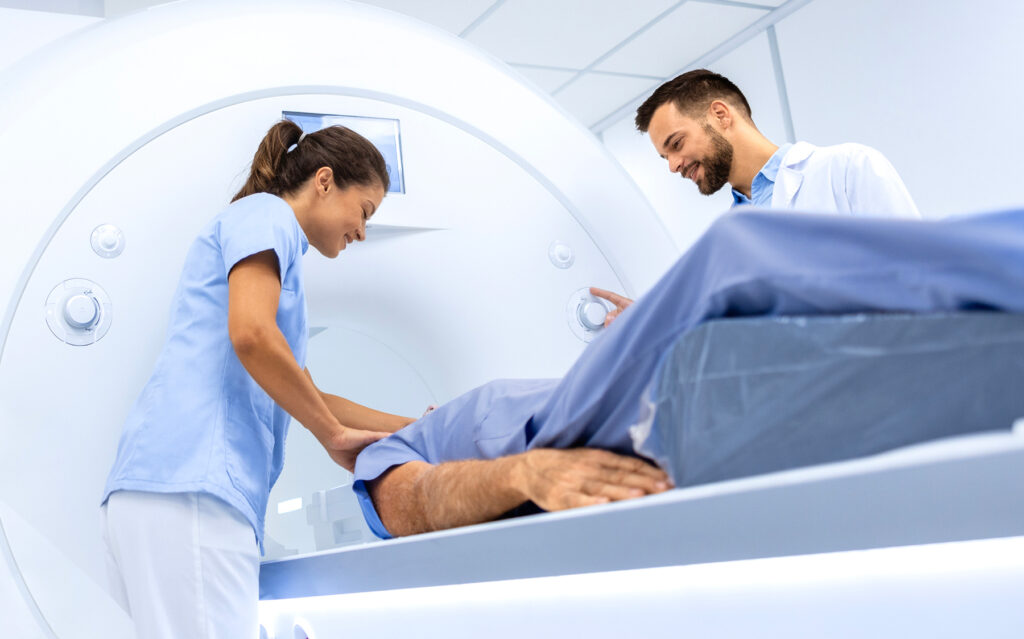The clinical benefits of Cardiac PET MPI are well-documented—enhanced image quality, improved diagnostic accuracy, and better patient outcomes. However, the decision to add PET/CT imaging to your practice is not just a clinical one—it’s a financial and operational commitment that requires careful evaluation.
While PET/CT can be a valuable addition, leading to improved patient care and increased profitability, it also comes with significant upfront and ongoing costs. If not properly assessed, these expenses can place a financial strain on your practice.
Before making the decision to implement Cardiac PET/CT, it’s essential to evaluate six key cost factors and understand how they impact your financial and operational outlook.
1. Equipment Costs
The most obvious and substantial investment in PET MPI is the PET/CT scanner itself. A new PET/CT system can cost well over a million dollars, while high-quality refurbished systems may be available at a lower price point.
Before purchasing equipment, it is crucial to identify the specific requirements for Cardiac PET MPI. Overinvesting in an unnecessarily high-spec system can erode long-term profitability, while underinvesting in an inadequate scanner may limit diagnostic capabilities.
2. Staffing Considerations
Your existing nuclear medicine technologists may be able to perform PET/CT imaging with additional training, which can help stabilize operational costs. However, staffing challenges can arise depending on licensing requirements in your state. Some states require technologists to hold both nuclear medicine and X-ray certifications, which can make hiring more difficult and expensive. Dual-registered technologists are in high demand, and salaries for these professionals reflect their specialized skill set.
If your PET/CT scan volume grows, you may also need to hire additional staff to manage scheduling and patient flow. Practices performing more than 10 scans per day often require another technologist or additional support personnel. Factoring in training costs, recruitment, and scheduling efficiency is key to ensuring a sustainable staffing model.
3. Facility Improvements
Unlike SPECT cameras, PET/CT scanners can require significant facility modifications. The room where the scanner is installed must have adequate power supply, lead shielding, and weight-bearing capacity to accommodate the equipment, which often weighs 12,000–14,000 pounds. The physical footprint is also larger than SPECT, requiring sufficient square footage to ensure smooth workflow and patient comfort.
Additionally, PET imaging requires an uptake room where radiopharmaceuticals are administered. This space must be properly shielded to protect staff and other patients from radiation exposure. Failing to account for these infrastructure requirements can lead to unexpected costs and delays in implementation.
4. Patient Volume Considerations
One of the most critical factors in evaluating PET MPI is your current patient volume. PET reimbursement policies can be more restrictive and many payors do not allow a one-to-one replacement of SPECT scans with PET, meaning that only a portion of your current SPECT patients will qualify for PET MPI.
A general guideline is that 30–35% of SPECT patients meet clinical criteria for PET. If your practice performs 70–75 SPECT scans per month, you may have enough volume to sustain a PET program. However, if patient numbers are lower, the financial burden of PET/CT could outweigh its benefits. Accurately projecting PET volumes is crucial to determining whether your practice can support the modality.
5. Ongoing Operating Costs
Beyond the initial equipment purchase, PET MPI has unique recurring costs that must be factored into long-term planning. One of the most significant expenses is radiopharmaceutical supply. Unlike Technetium-based tracers used in SPECT, Rubidium-82 must be generated onsite, requiring a Rubidium generator. Leasing a generator costs $30,000–$40,000 per month, representing a substantial fixed cost.
Service contracts are another notable expense. PET/CT scanners require annual maintenance agreements that range from $110,000 to $160,000 per year. Without a service contract, unexpected downtime or repairs can become a significant financial liability. Additionally, regulatory compliance, licensing, and accreditation add administrative costs that should be incorporated into financial projections.
6. Estimated Reimbursements
The higher reimbursement rate for PET MPI is one of its biggest draws, often up to five times that of SPECT. However, these high reimbursement rates also come with greater scrutiny from payors.
- Medicare currently allows a direct SPECT-to-PET replacement.
- Most private insurers require prior authorization, which can create administrative hurdles.
- As more providers adopt PET MPI, payors may introduce stricter guidelines or lower reimbursement rates over time.
Understanding your specific payor mix and reimbursement landscape is essential before making a financial commitment to PET/CT.
Making an Informed Decision
Cardiac PET/CT can be a transformative addition to your practice, enhancing diagnostic accuracy and creating a new revenue stream. However, it is not a one-size-fits-all solution.
By carefully evaluating these six cost factors—equipment, staffing, facility upgrades, patient volume, operating costs, and reimbursement—you can determine whether PET MPI is a strategic investment for your practice or if alternative imaging solutions might be more viable.
Taking the time to conduct a thorough financial analysis now will ensure that, if you move forward with PET/CT, it is a sustainable and profitable decision for the long term.


